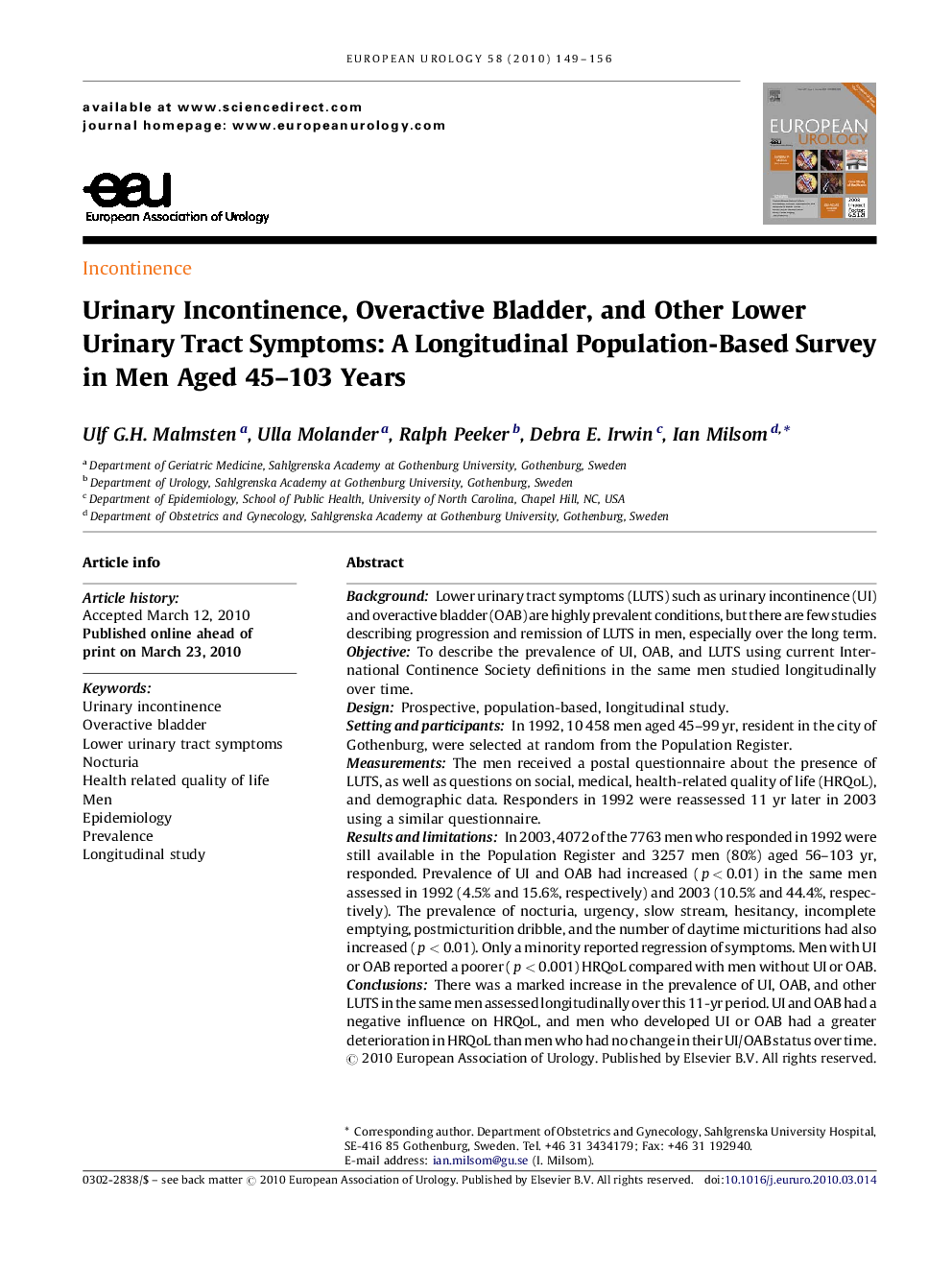| کد مقاله | کد نشریه | سال انتشار | مقاله انگلیسی | نسخه تمام متن |
|---|---|---|---|---|
| 3924433 | 1253102 | 2010 | 8 صفحه PDF | دانلود رایگان |

BackgroundLower urinary tract symptoms (LUTS) such as urinary incontinence (UI) and overactive bladder (OAB) are highly prevalent conditions, but there are few studies describing progression and remission of LUTS in men, especially over the long term.ObjectiveTo describe the prevalence of UI, OAB, and LUTS using current International Continence Society definitions in the same men studied longitudinally over time.DesignProspective, population-based, longitudinal study.Setting and participantsIn 1992, 10 458 men aged 45–99 yr, resident in the city of Gothenburg, were selected at random from the Population Register.MeasurementsThe men received a postal questionnaire about the presence of LUTS, as well as questions on social, medical, health-related quality of life (HRQoL), and demographic data. Responders in 1992 were reassessed 11 yr later in 2003 using a similar questionnaire.Results and limitationsIn 2003, 4072 of the 7763 men who responded in 1992 were still available in the Population Register and 3257 men (80%) aged 56–103 yr, responded. Prevalence of UI and OAB had increased (p < 0.01) in the same men assessed in 1992 (4.5% and 15.6%, respectively) and 2003 (10.5% and 44.4%, respectively). The prevalence of nocturia, urgency, slow stream, hesitancy, incomplete emptying, postmicturition dribble, and the number of daytime micturitions had also increased (p < 0.01). Only a minority reported regression of symptoms. Men with UI or OAB reported a poorer (p < 0.001) HRQoL compared with men without UI or OAB.ConclusionsThere was a marked increase in the prevalence of UI, OAB, and other LUTS in the same men assessed longitudinally over this 11-yr period. UI and OAB had a negative influence on HRQoL, and men who developed UI or OAB had a greater deterioration in HRQoL than men who had no change in their UI/OAB status over time.
Journal: European Urology - Volume 58, Issue 1, July 2010, Pages 149–156